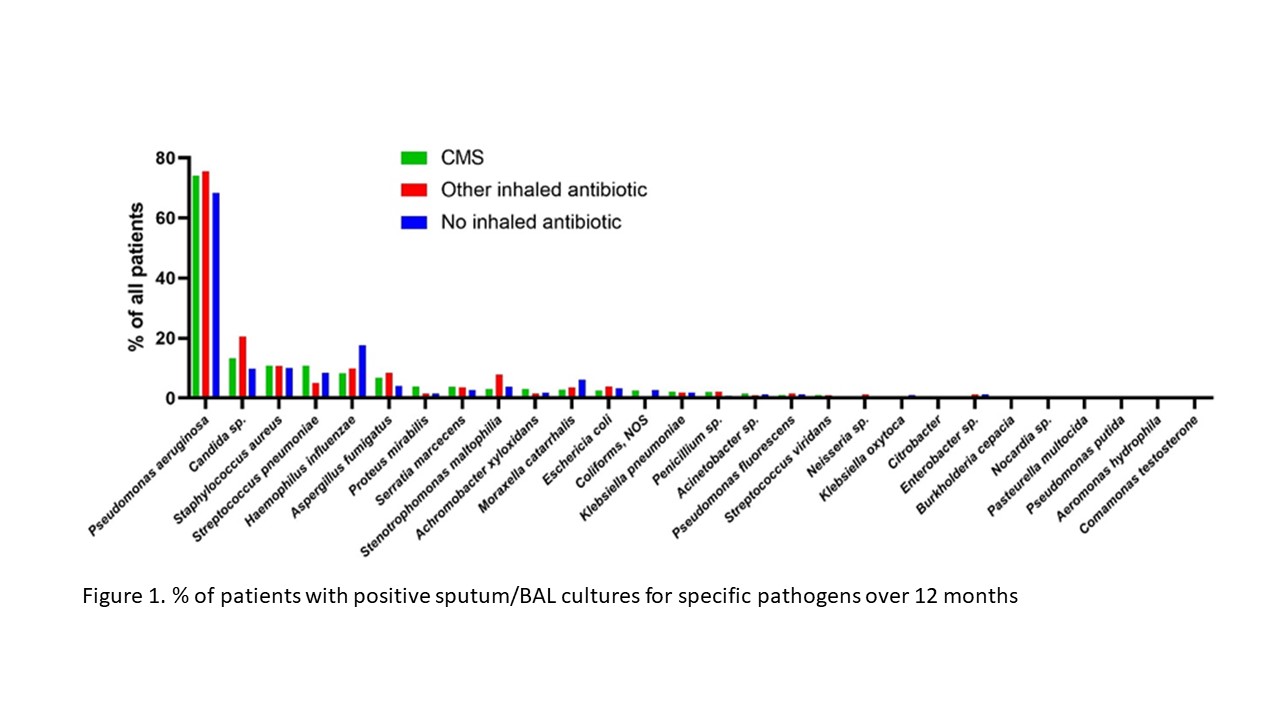Abstract
Introduction: A longstanding concern is whether inhaled antibiotics (IA) may select for emergent pathogens during long term treatment. This study investigated the microbiology of IA users in bronchiectasis.
Methods: A prospective registry of adults with bronchiectasis from 28 European countries (EMBARC). Patients with a history of P. aeruginosa infection were identified: 3 groups were defined: patients receiving inhaled colistimethate sodium (CMS), other IA and a control group not treated with IA (CTRL).
Results: 4538 patients were included with at least one microbiology sample over at least 12 months (CMS:738, IA:351, CTRL:3449). P. aeruginosa was the most commonly isolated pathogen. Few large differences were seen between the three groups. Candida and A. fumigatus were significantly (p<0.05) more common in the CMS and IA groups. H. influenzae and M. catarrhalis were significantly less common in IA patients (p<0.05), (figure 1).
In 2144 patients who had up to 5 years follow-up, similar results were found. H. influenzae, M. catarrhalis and E. coli were less frequently isolated in inhaled antibiotic users. Candida and Aspergillus sp were slightly more frequent.
Conclusion: We observed no evidence of clinically significant emergence of new pathogens in patients receiving long term inhaled antibiotics.
